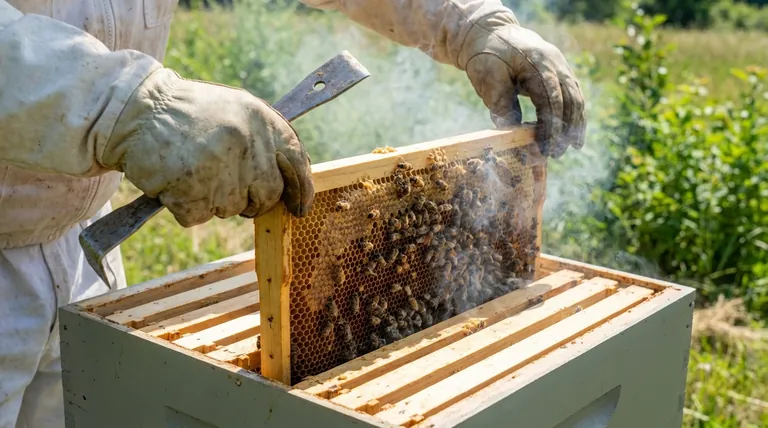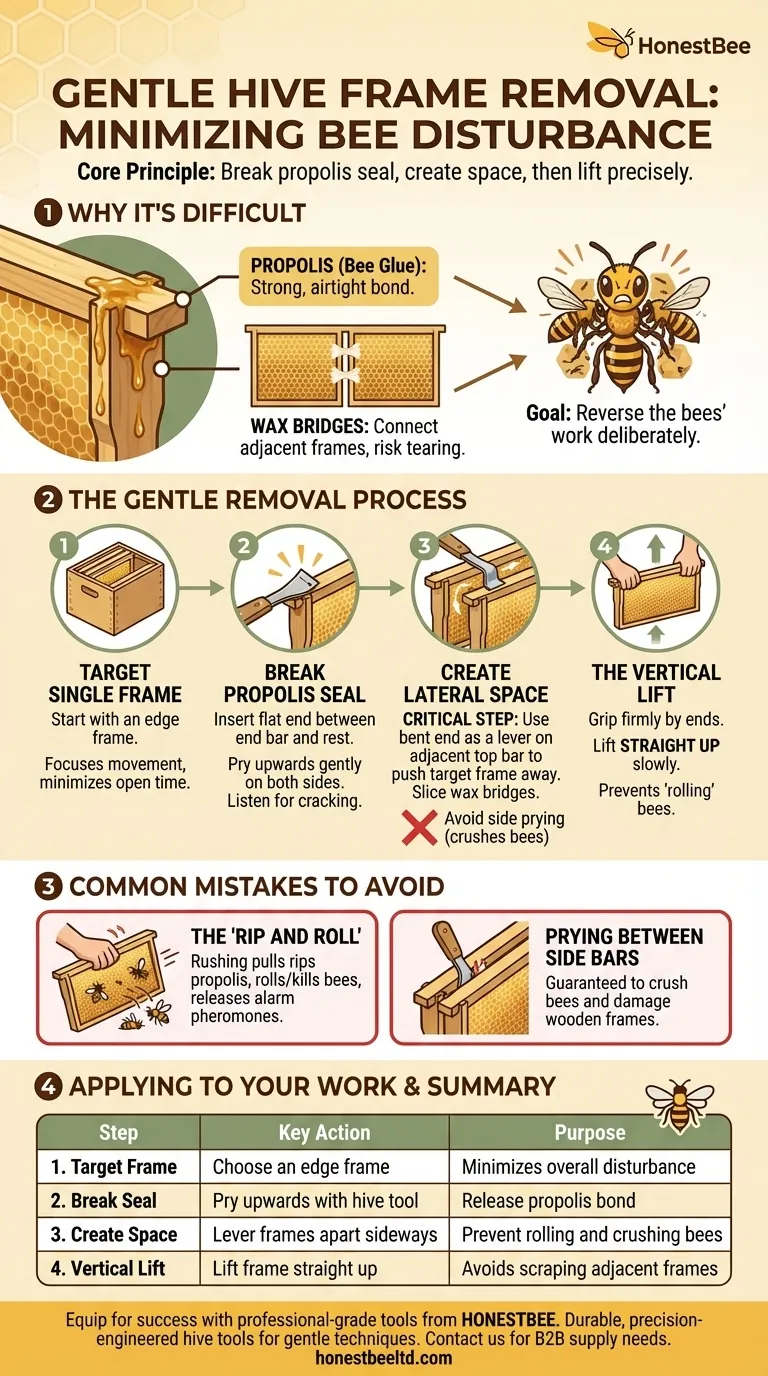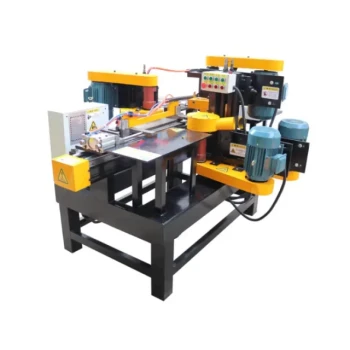To remove a frame with minimal disturbance, you must first break the propolis seal and create space around it before lifting. This involves using your hive tool not as a crude crowbar, but as a precise instrument to lever frames apart from their top bars and gently pry the frame ends from the frame rest. This methodical approach prevents the jarring movements and crushing of bees that trigger a defensive response.
The core principle is to avoid sudden, tearing motions. By systematically creating a gap around one frame at a time, you can lift it straight up, preventing the "rolling" of bees between adjacent frames, which is a primary cause of colony agitation and potential harm to the queen.

Why Frames Are So Difficult to Remove
To work gently, you must first understand what you're working against. Frames are not just sitting loosely in the hive; bees actively glue them into place.
The Role of Propolis
Bees use propolis, a resinous substance collected from plants, as a "bee glue" to seal cracks and secure hive components. They apply it between the frame end bars and the hive body's frame rest, creating a strong, airtight bond.
The Problem of Wax Bridges
In addition to propolis, bees often build small wax bridges connecting adjacent frames. Attempting to pull a frame without breaking these connections will tear the comb and agitate the colony.
The Gentle Frame Removal Process
The goal is to reverse the bees' work deliberately. This requires a specific sequence of actions using your hive tool.
Step 1: Target a Single Frame
Always work on one frame at a time, typically starting with one on the edge of the box. This minimizes the time the full hive is open and focuses your movements.
Step 2: Break the Propolis Seal
Insert the flat end of your hive tool between the top of the frame end bar and the frame rest. Gently pry upwards on both sides of the frame. You should hear a slight cracking sound as the propolis seal breaks.
Step 3: Create Lateral Space
This is the most critical step. Instead of prying frames apart from the sides (which crushes bees), use the bent end of your hive tool as a lever. Hook it over the top bar of the adjacent frame and use it to push your target frame away, creating a gap.
Slice any visible wax bridges between the top bars with the corner of your tool's blade.
Step 4: The Vertical Lift
Once you have created enough space to avoid scraping against the next frame, grip the target frame firmly by its ends. Lift it straight up, slowly and deliberately. This vertical motion prevents you from rolling bees between the frame's side bar and the adjacent comb.
Common Mistakes to Avoid
Rushing an inspection or using improper technique is counterproductive, leading to stings and a stressed colony.
The "Rip and Roll"
The most common mistake is simply grabbing a frame and pulling it out. This rips the propolis seal, often rolls and kills dozens of bees against the adjacent frame, and sends alarm pheromones throughout the hive.
Prying Between Side Bars
Never slide your hive tool deep between the wooden side bars of two frames to pry them apart. This action is guaranteed to crush bees and can easily damage your wooden frames.
Forgetting the Second Frame
After removing the first frame, the process becomes easier. However, you must still be deliberate. Nudge the second frame into the space you created before lifting it to ensure you have clearance.
Applying This to Your Hive Work
Your approach should be guided by the principle of calm, deliberate movement.
- If your primary focus is a quick inspection: Mastering the lever technique to create space for the first frame is the key to efficiency, as all subsequent frames will be easier to move.
- If your primary focus is minimizing bee stress: Work slowly, use minimal and well-placed smoke, and ensure you lift every single frame perfectly vertically after creating sufficient space.
- If your hive is heavily propolized: Take extra time to carefully break the seals on both ends and slice any wax bridges before you even attempt to lever the frame sideways.
Following this gentle method will result in calmer inspections and a healthier, more productive colony.
Summary Table:
| Step | Key Action | Purpose |
|---|---|---|
| 1. Target Frame | Choose an edge frame | Minimizes overall disturbance |
| 2. Break Seal | Pry upwards with hive tool | Release propolis bond |
| 3. Create Space | Lever frames apart sideways | Prevent rolling and crushing bees |
| 4. Vertical Lift | Lift frame straight up | Avoids scraping adjacent frames |
Equip yourself for success with professional-grade tools from HONESTBEE. Our wholesale-focused operations supply commercial apiaries and distributors with durable, precision-engineered hive tools and equipment designed for the gentle techniques described above. Minimize bee stress and maximize hive health with gear built for professionals. Contact our team today to discuss your beekeeping supply needs.
Visual Guide

Related Products
- HONESTBEE Professional Bee Frame Machine for Side Bar Shaping
- Professional Galvanized Hive Strap with Secure Locking Buckle for Beekeeping
- HONESTBEE Bee Frame Side Bar Forming Machine Precision Engineered for High-Volume Production Bee Frame Machine
- Mini Desktop Bee Hive Frame Forming Making Machine
- Professional Wide Blade Honey Scraper for Beekeeping and Honey Processing
People Also Ask
- Why is it important to clean and sanitize beekeeping equipment before storage? Protect Your Apiary Investment
- What is the purpose of a small desktop bee frame forming machine? Automate Frame Assembly for Beekeepers
- What is the purpose of notches in the sidebars? Ensure Strong, Uniform Hive Frames for Easy Management
- What is the difference between assembled and unassembled beehive frames? Save Time or Money for Your Hive
- What are the qualities of the bee frame forming machine? Durable, Efficient, and Built to Last



















